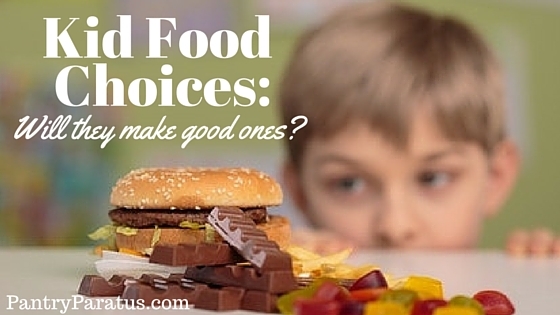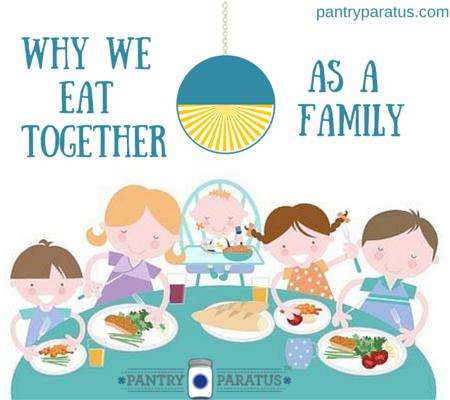
Growing up, the garden was somewhat family-cultural; it was an overflow of the psychological “make-do or do-without” mindset of both my parents, who came from poor, Midwestern backgrounds. It wasn’t because it was healthy; it was just a past-time and the way to secure access to green tomatoes for frying. Still, my favorite childhood food memories were the watermelon seed-spitting contests off the porch, stealing strawberries straight from the patch, measuring my height against the corn, and the fresh onions we kept in a glass of water on the table for any passerby to grab and munch.
That paints one picture of my childhood, and a really accurate one. But if you read Memoirs of a Kid on a Modern Food Diet, you’d wonder how I could claim both. But yes, while summertime onions graced the table, Hostess cupcakes filled the cupboards year around.
Years ago while working at a childcare in Europe, the cook would insist that, if a toddler was given a choice, little kids naturally choose the healthy food every time; that the singular factor dissuading them from the apple is only after they age and buy into media and cultural messages. I think he identified one factor, a single factor, but there is quite obviously more at play here. Even a two year old will pass over a carrot for a cookie. If he had, in a broader sense, meant that appetites were processes initially designed to fill biological needs but have been negatively affected by environment, then he would have been on to something.
Environment is everything. Access to good foods, family choices (to include family meal times), to the cultural presentation–these and many more factors play into the choices our kids will naturally make. As they grow, they’ll make their own decisions, but as they are learning those skills, we can stack the deck. Let’s look at how.
What are the factors that play into kid food choices?
Better question: how can we empower them to make better food choices?
Here’s an honest question–how can we empower ourselves (as adults who know better) to make them?
I am going to talk about 4 natural landmines that inhibit good food decision-making. Let’s see what we might do in each case to simplify things for them (and even ourselves).
Kid Food Choice Landmine #1: Sweet Tooth/Salty Tooth
We have a lifelong love affair with the #1 food additive–sugar. There are those who try to just choose the healthiest alternatives, those who try to quit it cold-turkey, and those who find themselves hiding in the closet with the candy bar, hoping the kids don’t catch on to Mommy’s Secret Stash. You, yeah, you–I”m on to you.

Don’t put a cupcake next to a carrot and expect a child to exhibit self-control you may not even possess yourself. Even if you have conquered your own demons, children by definition haven’t developed the maturity for long-term thinking, weighing out the consequences, and the self-control to walk away.
If your child has a medical concern, such as juvenile diabetes, you will learn how to manage this through your trips to the nutritionist. An innocent lollipop from a well-meaning bank teller can wreak havoc. But for the rest of us, we can expect some snacks and treats (church, school, friends), and just give a casual, “Oh, okay” without over-glorification of their decision.
Kid Food Choice Tip: Drastically lower choice. Limit what enters your home or the lunch box. Do not cut out 100% access or you may inhibit the child’s ability to learn good decision-making in the future when you do not have 100% control.
Kid Food Choice Landmine #2: Food Aversions
These are often caused by over-stimulation from the food item–a pungent smell, slimy texture, overly chewy, etc. We often do not extend the same grace to children that we ourselves expect. I know adults who do not like cooked onions or stewed tomatoes purely on the basis of texture. I, for one, absolutely adore sushi but have heard many people say they couldn’t try it because of smell or texture alone. And even for those of us who overcame those quirks, we did it at our own pace and not at the severe admonishment to “get over it.” For many children (and adults), the smell and texture are very real problems. To them, even the most benign thing in front of them (sauteed zucchini or roasted eggplant) may feel like a buffet of sushi (or name your aversion) would feel to you.
Since my kids don’t like slimy spinach, I dehydrate instead, adding it pasta and soup, and really anything that already had green flakes of Italian spices. They know it is in there–I don’t pretend otherwise, but the overbearing smells and textures have been completely eliminated. I do the same with nearly every vegetable for sheer convenience of having every vegetable at my fingertips in my kitchen.
The pediatric experts in the field say that parental anxiety or force-feeding these much-hated foods can exacerbate the problem (see sources). There is also evidence that food aversion is genetic. Even if they never find the “I hate slimy food” gene, chances are, you remember something you didn’t like. Let that build your empathy in the moment.
Food Choice Tip: If it’s a nutritional deficiency you are trying to meet, find an alternative food with the same nutritional overlay or powder vegetables to add into casseroles, soups, and other dishes.
Kid Food Choice Landmine #3: Fear of Something New
Most kids are just hesitant with new foods. If you have never served quinoa before and they are making motes and castles out of it on the plate, well, that pretty normal. Neophobia is the term as applied to someone with a fear of new things so severe that it interferes with daily life functioning (and crosses over into other areas beyond food); that would require medical evaluation.
Fear of New food? Kid Food Choice Tip: Start by adding new foods slowly into already well-loved dishes, and don’t try to hide it. Let them know that there is some quinoa mixed in with the rice, or kohlrabi in their favorite chicken noodle soup.

Kid Food Choice Landmine #4: Overeating
Of my three kids, I have one over-eater. And it plays into Landmine #1. We were making our annual Christmas cookies when she was only 4, and each kid got to decorate a tray. I set her up to decorate, but walked away for a minute to pull more cookies out of the oven. I came back to her pooched out cheeks and an empty cookie tray. It’s still a family joke about how she “tossed her cookies” the entire night through. We do make light of it, yet use it to remind her of the consequences of overindulging.
Kid Food Choice Tip: Talk to your child about setting their own limits, and the consequences of ignoring them. “How many cookies do you think should be enough if you are at a party?” or “How do you feel when you eat things with food coloring?” This prepares them to resist when faced with temptations.
I am a mom, not a pediatrician or nutritionist. I do utilize my M.S. in counseling psychology to research the issues that are close to my own heart and family. With a child on the Autism Spectrum disorder and others that are..well…normal children, I wanted to share what I have learned myself in this journey. This is in no way meant to be medical or professional advice. Seek out the appropriate professional if your concerns go beyond the occasional cookie-over-carrot scenario or scrunched up nose.
These are my best tips for how to help guide your child into healthy decisions. Remember that lifestyle choices and family conversations have more impact than you could realize! Please leave a comment sharing your best tips with all of us! It might help another food-weary mom!
–Chaya
Sources:
Kelly, D., Bremner, R., & Hartley, J. (2013). Practical Approach to Pediatric Gastroenterology, Hepatology and Nutrition. Somerset, NJ, USA: John Wiley & Sons, Incorporated. Retrieved from http://www.ebrary.com
Simpson, S. J., & Raubenheimer, D. (2012). Nature of Nutrition : A Unifying Framework from Animal Adaptation to Human Obesity. Princeton, NJ, USA: Princeton University Press. Retrieved from http://www.ebrary.com
Have you read this one?


Great article, Chaya! I’ll just add that our children’s friends have also big influence over them. If you are a teenage girl and see your friends heading for the close grocery store to buy some sweets, there’s no doubt you would go too. Unfortunately, this bad influence is too hard to cope with…
Great point! My kids aren’t those ages yet, but I’m starting to see the pull of influence on my oldest (age 10). It doesn’t help that he has weird food allergies and he doesn’t want to stand out from the crowd. I think those types of things matter, too.